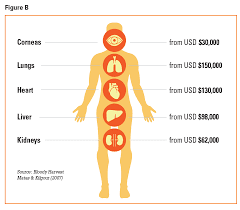 UNDERSTANDING MONEY LAUNDERING
UNDERSTANDING MONEY LAUNDERING
Defining money laundering and identifying the full scope of money laundering practices is the critical first step in creating an effective anti money laundering framework within a financial organization.
What Is Money Laundering?
Essentially, money laundering refers to all actions and procedures intended to change the identity of money made from criminal activities in order to create the impression that the money has a legitimate source.
Money laundering, loosely defined, is the transactional processing or moving of illicitly gained funds (such as currency, cheques, electronic transfers or similar equivalents) towards disguising its source, nature, ownership or intended destination and/or beneficiaries. The desired outcome of this process is “clean” money that can be legally accessed or distributed via legitimate financial channels and credible institutions.
Money laundering scams abound, yet they all have a single goal in common: to create the illusion that illicitly generated funds have a legal source. As such, the challenge for Anti Money Laundering (AML) legislation is to cover loopholes as quickly and effectively as possible.
What drives money laundering?
Money laundering, as a rule of thumb, is driven by a criminal imperative aimed at generating profits in an illegal fashion. Such proceeds of organized crime, fraud or embezzlement exist “outside” a country’s legitimate financial system.
The money laundering process aims to camouflage such funds or financial assets by passing it through multiple accounts and shell companies (an illicit process referred to as “money laundering”) towards either totally obscuring the original source, or towards associating the funds or assets with a source that looks legal. If the laundering process is successful, the launderer gains access easily accessible funds that looks legitimate, and can be moved around with ease.
Why exactly is money laundering a problem?
The socio-economic effects of money laundering are crippling: illicit funds generated from criminal activities such as gun running, drug and human trafficking and other forms of organized crime are laundered into clean currency, and in turn used to fund new criminal operations or expand existing ones. This translates into more drug trafficking and dealing, more illegal firearms, more violent crimes, and – most disconcertingly – more international terrorism.
Left unchecked, money laundering can undermine the integrity of entire financial systems and embroil individual financial institutions in share-crippling financial scandals.
Moreover, the amounts of money generated from criminal activities and laundered throughout the world amount several billions of dollars – up to as much as 5% of global GDP. This gives the beneficiaries of money laundering a lot of muscle, and certainly enough means to threaten political stability worldwide.
In essence, regulatory compliance seeks to curb this criminal proliferation by holding financial systems providers and banking institutions accountable for the financial activities of the clients they deal with. Money laundering poses a very real threat to the reputation and financial well-being of banks, law firms, accountants and asset management houses around the world, as these institutions are often unwitting accomplices in the laundering of dirty money.
Anti Money Laundering (AML) compliance post-9/11
Since the 9/11 attacks in the United States, AML and Anti Financing of Terrorism (ATF) compliance requirements for banks, law firms, accounting firms, asset management houses and similar financial service providers have been expanded significantly. The USA Patriot Act, BASEL II Act and Wolfberg principles, for example, serve as a framework for standardizing Anti Money Laundering (AML) compliance and Know Your Customer (KYC) due diligence mandates.
Find out more about Anti Money Laundering (AML) laws and their implications for regulated service providers.
Organizations such as the Financial Action Task Force (FATF), Wolfsberg Group and Basel Committee are key drivers of the regulatory policy-making process, and are closely involved in the standardization and enforcement of related compliance mandates.
How does money laundering work?
There exists a plethora of ways in which illicit funds can be laundered, yet the following example provides a good basic illustration of the thinking underlying the process:
A drug dealer may own a restaurant or bar, or be in cahoots with a partner that does. Proceeds from their drug dealing then gets paid into this reputable business, along with other regular trading income.
The launderers then open up additional service businesses or supply companies to serve the business or enterprise where money is initially placed. These service entities then issue invoices, which the restaurant settles by means of cheque payments. By increasing the amount of businesses interacting by means of such transactions, and by moving the money around internationally, the criminal origins of the money is effectively obscured, if not fully concealed. The successful laundering enriches the directors and/or the shadowy interests they represent.
Forensic auditors would need to spend months – if not years – retracing each step, hence such investigations are generally not undertaken unless the amount of money being laundered is substantial, or the nature of the crimes being funded is heinous.
The beneficiaries of such money laundering scams and syndicates are often high net-worth individuals and entities, and in turn they become highly sought after as private banking clients. They then tend to gain access to legitimate investment opportunities and privileged high-end investment funds, making apprehending them even harder.
To this end, Anti Money Laundering (AML) legislation and the regulatory bodies enforcing compliance endeavour to close money laundering loopholes on an ongoing basis. This is achieved by expanding the existing money laundering definition and AML compliance requirements, and by holding banks, law firms, asset managers and accounting houses accountable for their compliance performance.
For banks, AML compliance is by no means a new challenge, yet recent world events have prompted the critical reassessment and expansion of existing compliance regulations. The number of industries being regulated in terms of AML compliance, KYC regulation and AFT compliance has also increased substantially.
The 3 stages of money laundering
Essentially, there are three primary (though often overlapping) stages in the money laundering “spin cycle”:
- The placement stage
- The layering stage
- The integration stage
Money Laundering: The Placement Stage
During the placement stage, the hard currency generated by the sale of drugs, illegal firearms, prostitution or human trafficking etc needs to be disposed of, and is deposited in an institution or business. Expensive property or assets may also be bought.
Money Laundering: The Layering Stage
During the layering stage, money launderers endeavour to separate illegally obtained assets or funds from their original source. This is achieved by creating layer upon layer of transactions, by moving the illicit funds between accounts, between businesses, and by buying and selling assets on a local and international basis until the original source of the money is virtually untraceable.
The more transactional layers are created, the more difficult it becomes for an auditor to trace the original source of illicit funds, and thus anonymity is achieved.
Money Laundering: The Integration Stage
Upon successful completion of the financial layering process, illicit funds are reintroduced into the financial system, as payment for services rendered, for example. By this stage, illegally obtained funds closely resemble legally generated wealth.
Depending on the money laundering mechanisms available to the launderer, these three steps may overlap. Whether the money laundering process starts with a deposit or a purchase, the methods will invariably entail layers of shape-shifting transactions aimed at distancing the funds or assets from their source origins. The further this transactional distance becomes, the “cleaner” the laundered money appears.










